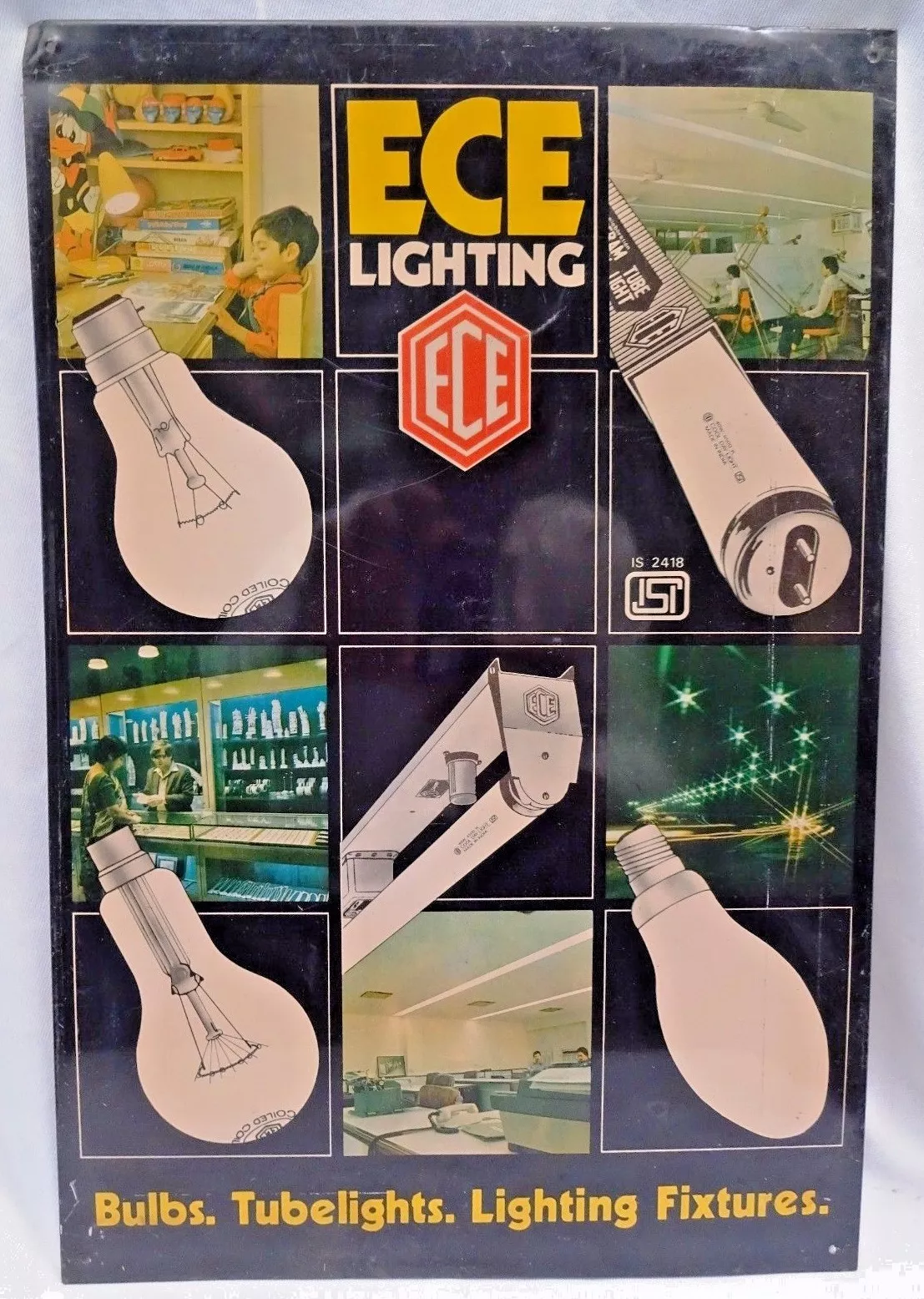Iconic Ads: ECE Bulbs – Bhool Mat Jana

ECE’s legacy endures as a case study of how effective advertising can transform even the most utilitarian product into a household name.
Light bulbs, as a product, rarely evoke excitement. They are functional, often overlooked items in everyday life. But rewind to the early 1980s, and you’ll find an unlikely disruptor in the lighting market: ECE Bulbs, produced by ECE Industries, part of the BK Birla Group. At a time when home and office lighting typically involved basic white tube lights, ECE Bulbs shook up the market—not through product innovation but by leveraging an ingenious advertising strategy.
The Challenge of a Bland Brand Name
One of the biggest hurdles for ECE Bulbs was its uninspiring name. The brand lacked the kind of identity or emotional appeal that usually resonates with consumers. The name “ECE” carried no inherent meaning or connection, making it forgettable at best. (It is an acronym for Electric Construction & Equipment Co., Ltd.) Despite this, the company managed to create an enduring presence in the market through a memorable marketing campaign centred around a simple yet effective jingle.
A Jingle That Captured a Nation
The key to ECE’s success was its catchy and repetitive jingle: “Bhool mat jaana, ECE bulbs hi laana” (Don’t forget to bring home ECE bulbs). Though the slogan was straightforward, its repetition embedded the brand into the minds of consumers. The advertisements themselves were simple and unpretentious, but they delivered the message with such clarity and charm that they became unforgettable.
A Multi-Lingual Approach to National Appeal
One of ECE’s most iconic television campaigns featured actor Kanwarjit Paintal in the role of an office worker. The advertisement begins with his wife reminding him to buy an ECE bulb as he leaves for work. Throughout the day, everyone he encounters—a domestic worker, lift operators, and even a restaurant owner—repeats the same message in different languages: “Don’t forget the ECE bulb.”
This multilingual approach was particularly powerful in a diverse country like India. By featuring different languages, the campaign resonated with audiences across various regions, fostering a sense of national unity. It reminded viewers of Doordarshan’s famous Mile Sur Mera Tumhara, another initiative that celebrated India’s linguistic diversity.
Breaking Through a Homogeneous Market
Unlike categories such as soap or toothpaste, where features and benefits could differentiate brands, light bulbs were largely indistinguishable. This made brand recall critically important. ECE’s campaign succeeded in ensuring that its name remained at the forefront of consumers’ minds. The advertisement cleverly depicted how an entire nation seemed collectively fixated on reminding people to buy ECE bulbs, creating an almost comical level of brand obsession.
The Dual Impact of the Campaign
The campaign worked on two levels. On the surface, it was conspicuous in its constant, almost excessive repetition of the brand message. However, this apparent simplicity masked a deeper, more surreptitious impact: the jingle subtly influenced purchasing behaviour by embedding itself into consumers’ subconscious. The result was a strong recall value that directly translated into sales.
The Essence of Effective Advertising
ECE’s strategy highlights a crucial principle of advertising: the need to deeply connect with the audience. Understanding the target market and delivering a message that resonates emotionally or culturally is key. In this case, a straightforward jingle and a relatable narrative did the trick, proving that even the most ordinary product can capture hearts with the right marketing approach.
Market Evolution and Competition
As the 1990s rolled in, the lighting industry began to change. New players like Philips and GE introduced segmentation, offering consumers a wider range of products. These multinational companies brought advanced technology and targeted marketing, intensifying competition in the sector.
The End of an Era
By 2013, ECE Industries decided to exit the lighting business altogether. The company sold its lamp division to Osram India, a subsidiary of the German firm Osram GmbH, for ₹42.5 crore. ECE chose to focus on other ventures, while Osram continued to build its presence in India’s lighting market.
Conclusion: A Legacy of Simplicity and Impact
Though ECE Bulbs no longer dominates the market, its legacy endures as a case study of how effective advertising can transform even the most utilitarian product into a household name. By focusing on a simple message, cultural resonance, and relentless repetition, ECE demonstrated the power of marketing in creating lasting brand impact—even in the face of a bland product and a forgettable name.



